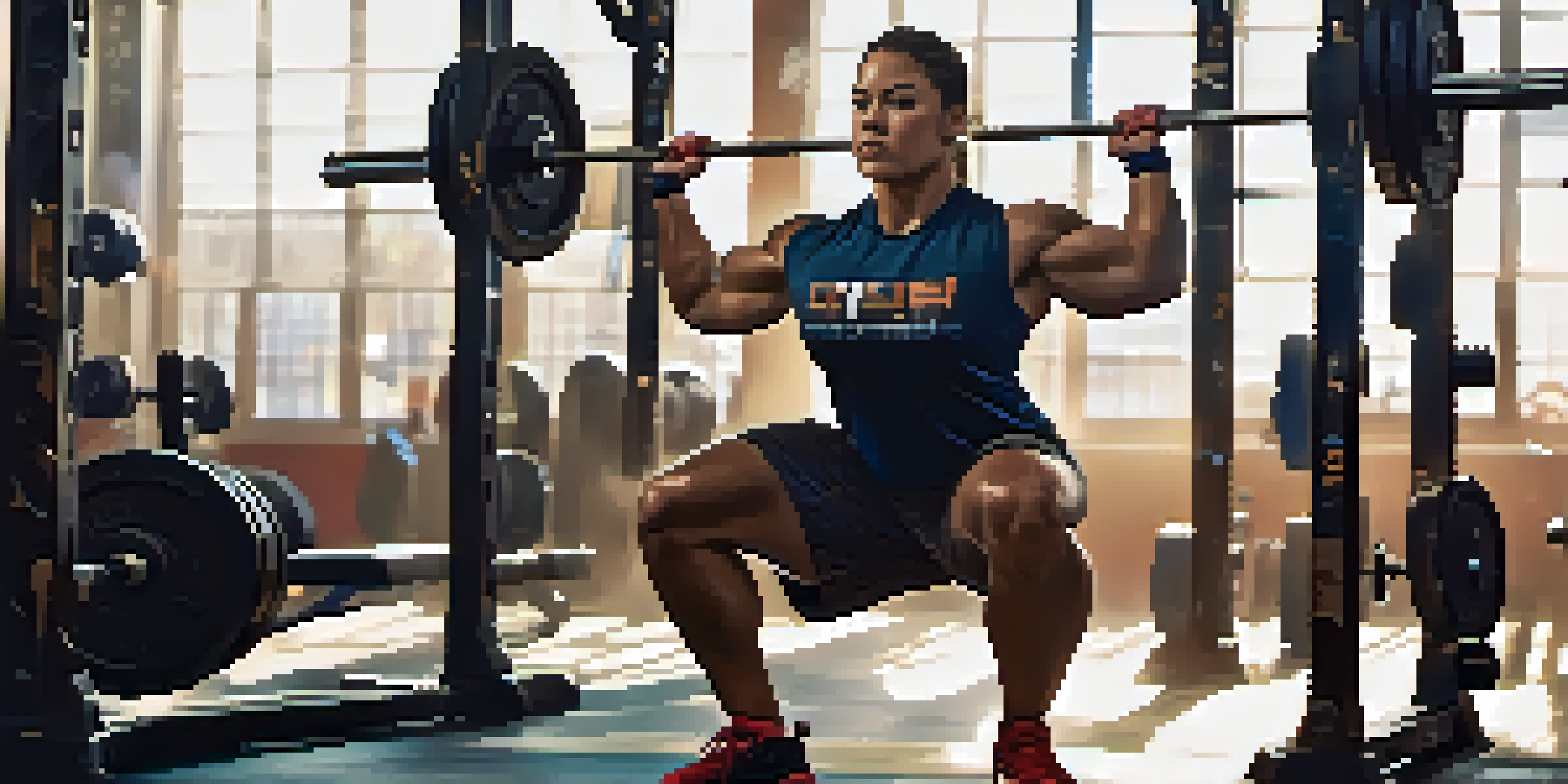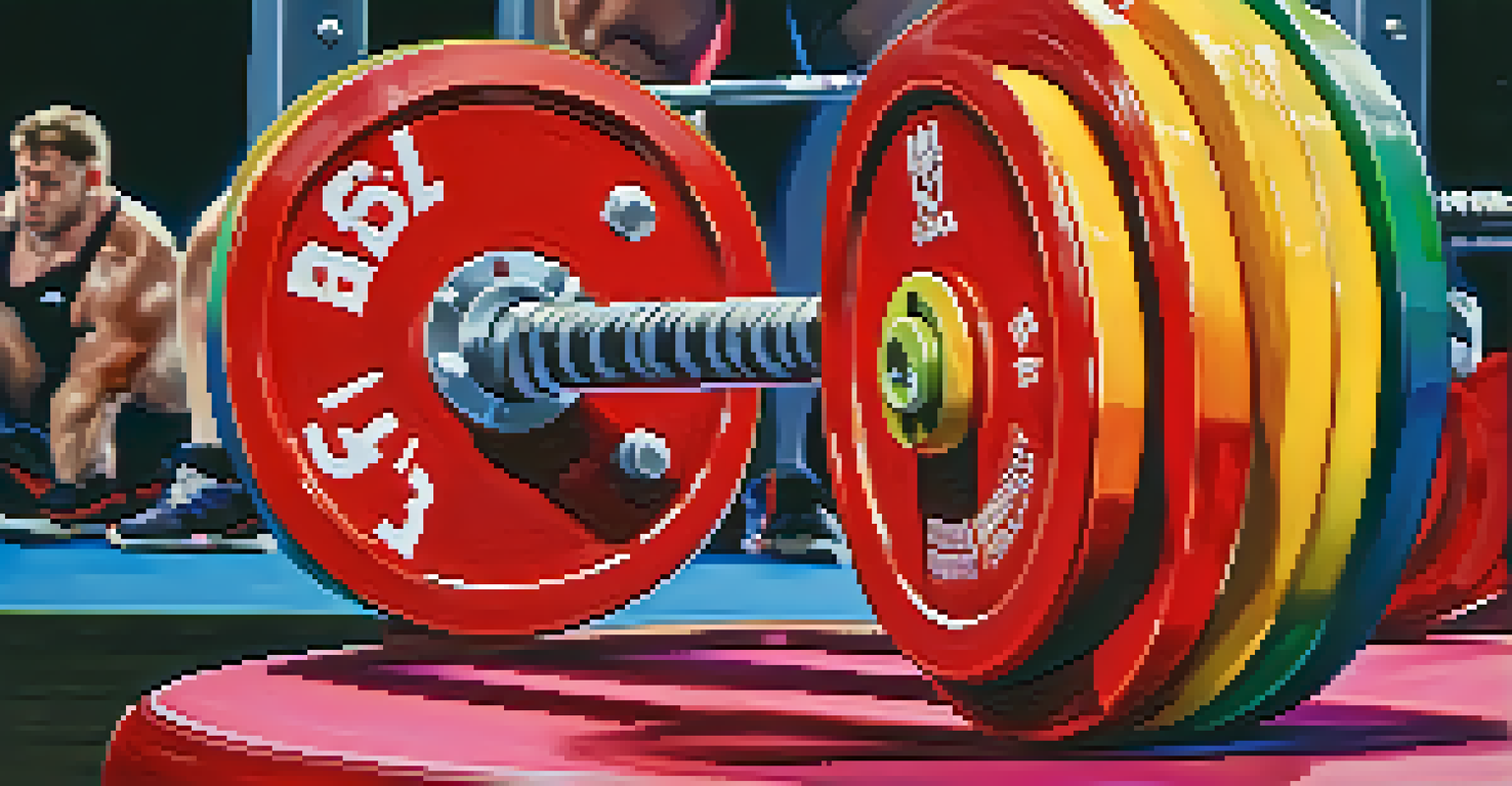Creating a Powerlifting Meet Game Plan: A Comprehensive Guide

Understanding the Basics of Powerlifting Meets
Powerlifting meets are competitions where athletes showcase their strength in three main lifts: squat, bench press, and deadlift. Understanding these lifts and their rules is essential for any competitor. Each lift has specific techniques and regulations that must be followed to ensure a successful attempt.
Success is the sum of small efforts, repeated day in and day out.
Before stepping onto the platform, familiarize yourself with the judging criteria and the commands used during the lifts. This knowledge will help you avoid common mistakes and make the most of your performance. Remember, the goal is not just to lift heavy but to do it in a way that meets the judges' standards.
Additionally, understanding the structure of a meet, including weigh-ins and warm-up times, can significantly affect your performance. A well-planned approach will help you stay calm and focused, ensuring you’re ready when it’s your turn to lift.
Setting Realistic Goals for Your Meet
Setting goals for your powerlifting meet is crucial, as it gives you something to strive for. Whether it's hitting a personal record or simply completing all your lifts, having clear objectives will keep you motivated. Remember, your goals should be specific, measurable, attainable, relevant, and time-bound (SMART).

Consider factors such as your training phase, current strength levels, and previous meet performances when setting these goals. For instance, if you’ve recently hit a new personal best in training, aiming to exceed that lift may be a reasonable target. However, if you’re still recovering from an injury, it might be wiser to focus on technique and consistency.
Master Your Lifts and Rules
Understanding the techniques and regulations of the squat, bench press, and deadlift is crucial for success in powerlifting meets.
Goals can also evolve as you progress through your training cycle. Be open to adjusting them based on how you feel leading up to the meet. Flexibility in your approach can lead to a more fulfilling experience and prevent unnecessary pressure.
Crafting a Training Plan Leading Up to the Meet
Your training plan is the backbone of your powerlifting preparation. It should include periodization, which is the strategic manipulation of training variables over time to peak at the right moment. Plan your training cycles to incorporate phases of volume, intensity, and specific skill work leading up to the competition.
The only way to prove you are a good sport is to lose.
As the meet approaches, consider tapering your training to allow your body to recover fully. This means gradually reducing the volume while maintaining intensity, so you’re fresh and ready to lift on meet day. Make sure to include mock meets in your training to simulate the competition environment and build confidence.
Furthermore, listen to your body during this period. If something feels off or you’re experiencing fatigue, don’t hesitate to adjust your training. Being in tune with your physical and mental state is key to ensuring peak performance.
Nutrition Strategies for Powerlifting Success
Nutrition plays a vital role in your powerlifting performance. Focus on a balanced diet that includes adequate protein, carbohydrates, and healthy fats to fuel your workouts. Consider working with a nutritionist who understands powerlifting to create a personalized meal plan that meets your energy needs.
In the weeks leading up to the meet, pay attention to your hydration levels and adjust your carbohydrate intake to optimize your performance. Consuming enough carbs will provide the necessary energy for your lifts, while staying hydrated will support overall performance and recovery.
Set SMART Goals for Success
Establishing specific, measurable, attainable, relevant, and time-bound goals keeps you motivated and focused during your training.
On the day of the meet, it’s essential to have a nutrition plan that includes pre-lift meals and snacks. Choose foods that are easy to digest and provide lasting energy without causing discomfort. Experiment during training to find what works best for you, so you’re confident in your choices come competition day.
Managing Pre-Meet Anxiety and Stress
Pre-meet anxiety is common among powerlifters, but managing it can enhance your performance. Start by developing a routine that includes relaxation techniques such as deep breathing, visualization, or meditation. These practices can help calm your nerves and keep you focused on your goals.
Another effective strategy is to familiarize yourself with the meet venue ahead of time. If possible, visit the location before the competition day to get a feel for the environment. Knowing what to expect can make the situation less daunting and help you feel more in control.
Don’t forget to lean on your support system, whether it’s coaches, training partners, or friends. Sharing your feelings and experiences can lighten the emotional load and provide valuable encouragement. Remember, it’s not just about lifting weights; it’s about enjoying the journey and growth that comes with powerlifting.
Developing a Warm-Up Routine for Meet Day
A solid warm-up routine can set the tone for your performance on meet day. Begin with dynamic stretches and movements that mimic the lifts you’ll be performing. This helps to increase blood flow and mobility, preparing your muscles and joints for the heavy loads to come.
Next, incorporate specific warm-up sets with lighter weights to groove your technique and build confidence. Gradually increase the weight while decreasing the number of reps, allowing your body to acclimate without fatiguing. Timing is key here; you want to feel energized but not exhausted by the time you reach your opening attempt.
Prioritize Recovery After Meets
Taking the time to reflect on your performance and focusing on recovery strategies is essential for long-term growth in powerlifting.
Lastly, don’t forget to mentally prepare yourself during your warm-up. Visualize your lifts and focus on your breathing to stay calm. A well-executed warm-up can make all the difference, ensuring you’re physically and mentally ready to tackle your competition lifts.
Post-Meet Reflection and Recovery Strategies
After your powerlifting meet, it’s essential to take time to reflect on your performance. Consider what went well, what challenges you faced, and what you can improve for next time. This reflection can help you identify strengths and areas for growth, ultimately guiding your future training.
Recovery is just as important as preparation. Allow your body time to recuperate after the meet by focusing on rest, nutrition, and gentle movement. Incorporate active recovery techniques such as light stretching, foam rolling, or low-intensity cardio to alleviate any soreness and promote blood flow.

Lastly, celebrate your achievements, no matter how big or small. Whether you hit a personal record or simply completed all your lifts, acknowledging your hard work is crucial. Powerlifting is a journey, and each competition brings valuable experiences that contribute to your growth as an athlete.